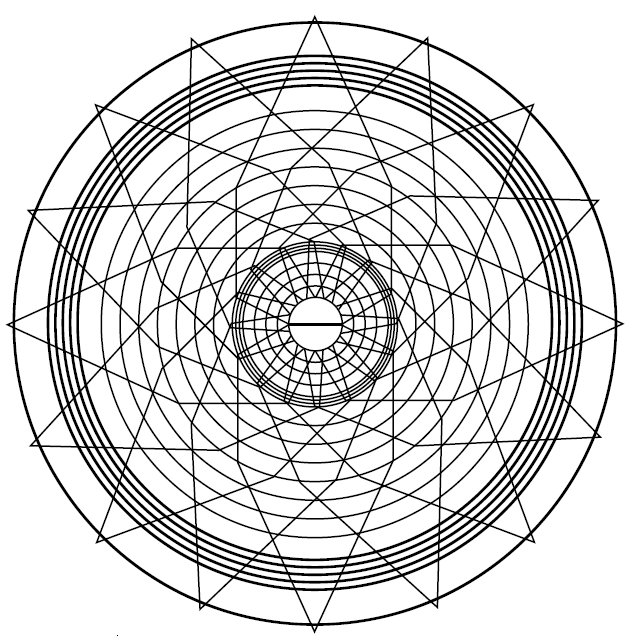Gamification as an Enabler of Communication
Abstract
Peacebuilding processes aim to establish communication among people who do not communicate with each other. Such communication can be built on a joint interest, such as sustainability and water preservation. One of the key challenges is the recruitment of participants, thereby overcoming hostility and suspiciousness. The proposed solution is to use a cellular gaming app in order to facilitate recruitment and offer a gamification of the activities related to water management. The methodology used in order to approach this complex challenge is founded on Foucaultian genealogy and a branch of philosophy of technology referred to as postphenomenology. The article examines the reference to the game as an enabler of experiments of the world. In order to ignite an experimental approach via gamification, the app should include three elements: casual mobile gaming, location-based gaming and social media gaming. Combined, these elements may lead to the design of a hybrid real-virtual space reward system and the creation of a community.
Full English text of this article was published in Volume 1, Issue 4 of “Communications. Media, Design” and can be found at: https://cmd-journal.hse.ru/article/view/2873
Downloads
References
Bogost, Ian. (2014) Why Gamification is Bullshit. The Gameful World: Approaches, Issues, Applications, 65-80. Cambridge, MA and London, England: The MIT Press.
Conca, Ken, and Geoffrey D. Dabelko (2002) Environmental Peacemaking. Woodrow Wilson Center Press.
Deci, Edward L., and Richard M. Ryan (2000) The ‘What’ and ‘Why’ of Goal Pursuits: Human Needs and the Self-Determination of Behavior. Psychological Inquiry: An International Journal for the Advancement of Psychological Theory 11, no. 4. Pp. – 227-268.
Deterding, Sebastian (2014) The Ambiguity of Games: Histories and Discourses of a Gameful World. The Gameful World: Approaches, Issues, Applications, by Steffen P. Walz and Sebastain Deterding, 23-64. Cambridge, MA and London, England: The MIT Press.
Friedman, Lyat (2014) Evenly Suspended Distractive Attention. Techné: Research in Philosophy and Technology 18, no. 1/2. Pp. – 84-101.
Frith, Jordan (2013) Turning life into a game: Foursquare, gamification, and personal mobility. Mobile Media & Communication 1, no. 2. Pp. – 248 –262.
Hall, Margeret, Steven O. Kimbrough, Christian Haas, Christof Weinhardt, and Simon Caton (2012) Towards the Gamification of Well-being Measures.
Haraway, Donna (1998) Situated knowledges: The science question in feminism and the privilege of partial perspective. Feminist Studies 14, no. 3. Pp. – 575-599.
Hayles, N. Katherine (1999) How We Became Posthuman: Virtual Bodies in Cybernetics, Literature, and Informatics. London: The University of Chicago Press.
Hjorth, Larissa, and Ingrid Richardson (2014) Gaming in social, locative and mobile media. London: Springer.
Huizinga, Johan (1955) Homo Ludens: A Study of the Play-element in Cult. Beacon Press.
Ihde, Don (2012) Experimental Phenomenology: Multistabilities (second edition). Albany: State University of New York Press.
— (1990) Technology and the Lifeworld: from Garden to Earth. Bloomington and Indianapolis: Indiana University Press.
Ihde, Don (2008B) The designer fallacy and technological imagination. Philosophy and design: from Engineering to Architecture, by Pieter E. Vermaas, Peter Kroes, Andrew Light and Steven E. Moore, 51-61. Spinger.
Kasser, Tim. (2002) Sketches for a self-determination theory of values. Handbook of self-determination research, 123-140.
Koopman, Colin (2013) Genealogy as Critique: Foucault and the Problems of Modernity. Bloomington: Indiana University Press.
Latour, Bruno (2013) An Inquiry into Modes of Existence. Harvard University Pres.
Linehan, Conor, Ben Kirman, and Bryan Roche (2014) Gamification as Behavioral Psychology. The Gameful World: Approaches, Issues, Applications, by Steffen P. Walz and Sebastian Deterding, 81-106. Cambridge, MA and London, England: The MIT Press.
Rao, Mithun Bantwal, J Jongerden, Pieter Lemmens, and Guido Ruivenkamp (2015) Technological mediation and power: Postphenomenology, critical theory, and autonomist marxism. Philosophy & Technology 28, no. 3. Pp – 449-474.
Richardson, Ingrid (2011) The hybrid ontology of mobile gaming. Convergence: The international journal of research into new media technologies 17, no. 4. Pp. – 419-430.
Ryan, Richard M., Veronika Huta, and Edward L. Deci (2008) Living Well: A Self-Determination Theory Perspective on Eudamonia. Journal of Happiness Studies 9. Pp. – 139–170.
Wellner, Galit (2015) A Postphenomenological Inquiry of Cell Phones: Genealogies, Meanings, and Becoming. Lexington Books.
Wellner, Galit (2013) No Longer a Phone: The Cellphone as an Enabler of Augmented Reality. Transfers 3, no. 2. Pp – 70-88.

